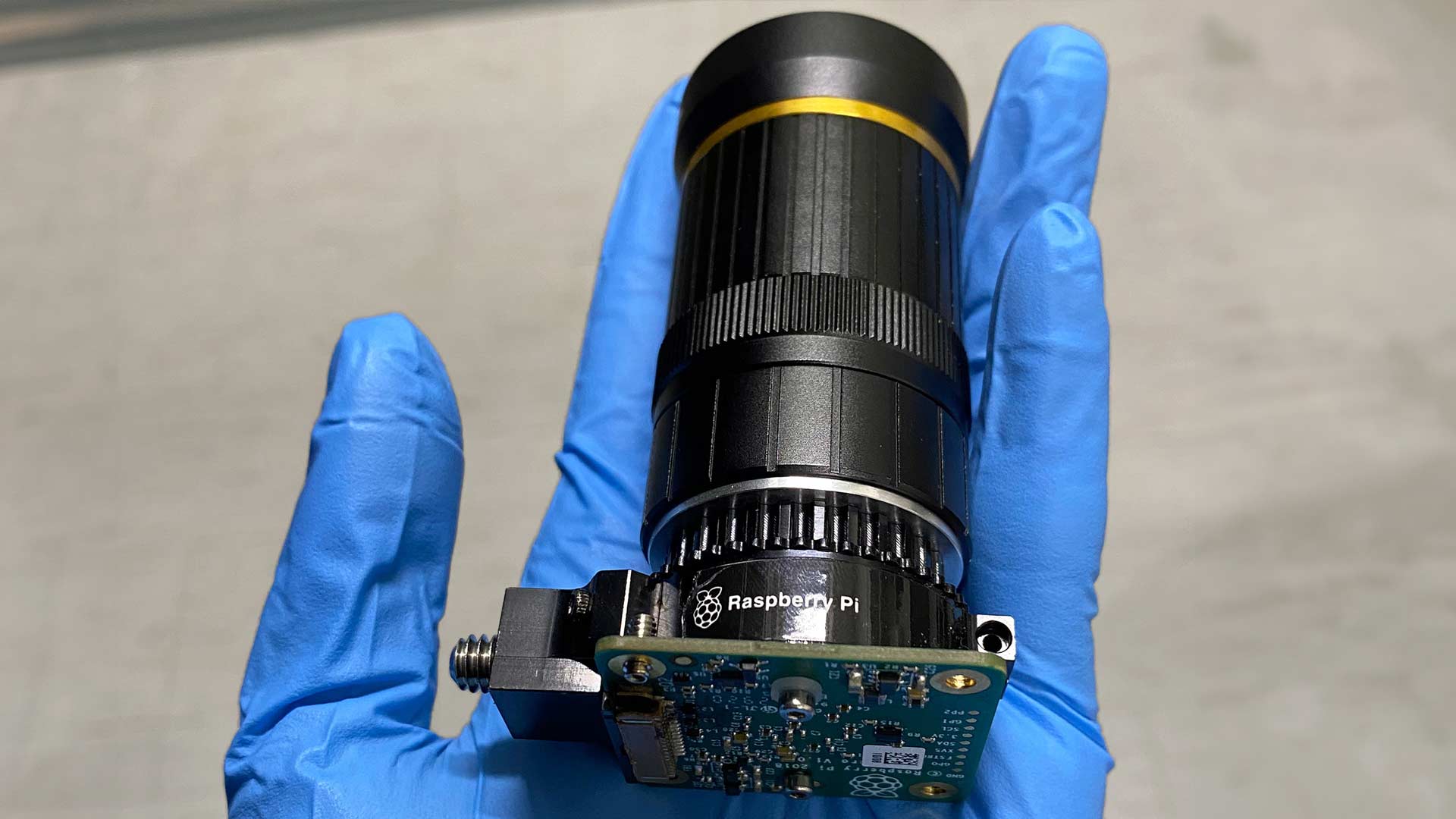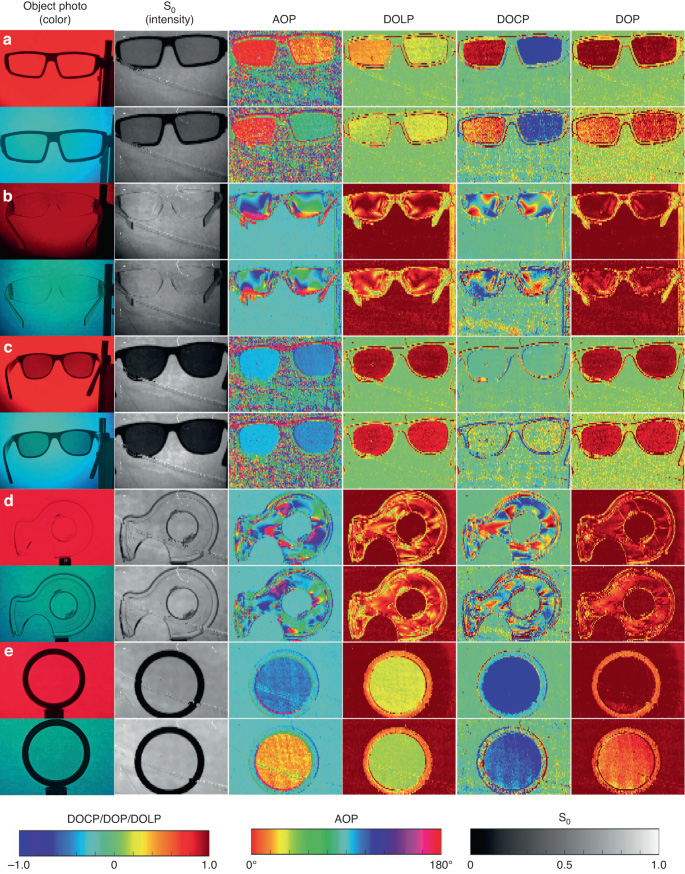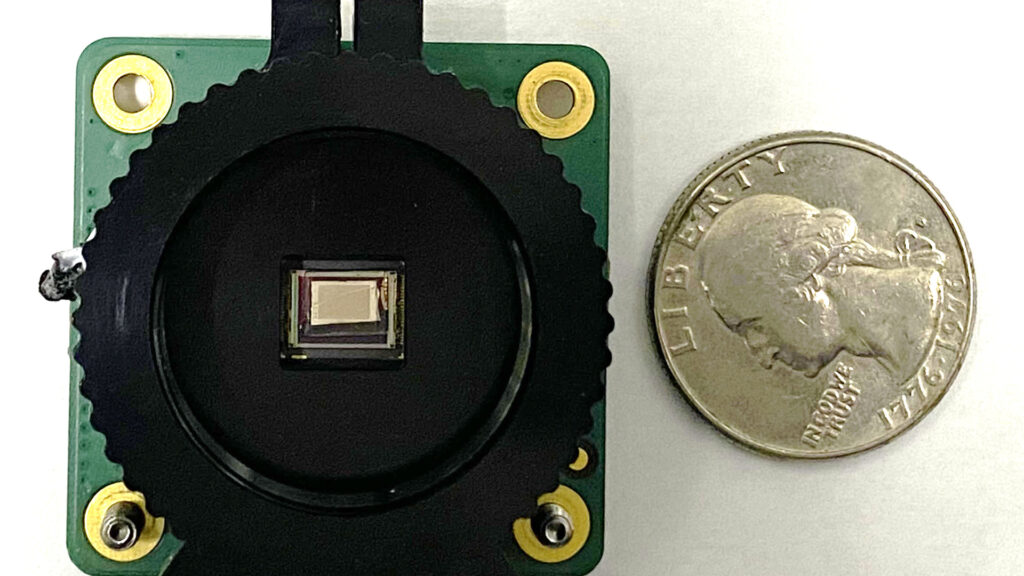
Advances in polarized imaging reveal new visual capabilities
ASU researcher Yu Yao’s new imaging sensor unlocks visioning potential for autonomous driving, biomedical imaging and more

Given the limitations of the human eye, sometimes applications require more advanced imaging. For example, an autonomous vehicle needs as much visual information about its surroundings as possible to assist in avoiding a collision.
One way to see beyond the human eye’s capabilities is using polarimetric imaging, which considers the polarization of light in every pixel of an image to create a fuller view of an object than a traditional camera.
To understand polarized light, it’s first essential to understand that light is made of electromagnetic waves, and normal light waves travel across many geometric planes. Polarized light, which is visible to the human eye by restricting light through such means as a polarized filter on a camera or polarized sunglasses, travels along a single plane linearly or on a rotating plane clockwise or counterclockwise as circularly or elliptically polarized light.
Polarimetric imaging can reveal information a normal photo or human eye may miss by providing additional views that can increase the contrast of details, such as clearly pointing out cracks in manufactured building materials before they can be used in construction and cause a catastrophic collapse.
However, polarimetric imaging technology is typically large and can provide inaccurate images due to its composition. The machinery involves many moving parts that can slow down the imaging process, which also causes inaccuracies when objects in the imaging sensor’s view move.
Yu Yao, an associate professor of electrical engineering in the Ira A. Fulton Schools of Engineering at Arizona State University, sought to solve these issues through years of research, culminating in the invention of a chip-integrated metasurface full-Stokes polarimetric imaging sensor, which she and her team have dubbed MetPolarIm.
Unlike traditional polarimetric imaging sensors, which are essentially cameras that take images using polarized light filters, MetPolarIm has no moving parts in it and is integrated with a complementary metal-oxide semiconductor, or CMOS, transistor chip.

A diagram showing polarization images of various objects. Object a is a pair of 3D glasses; object b is a pair of plastic goggles; object c is a pair of sunglasses; object d is a plastic cage; and object e is a camera circular polarizer filter. Each row starts with an object photo taken by a cell phone camera. The object photo labeled “color” indicates bandpass filters applied in front of a light source in the range of 630 nm to 670 nm in the red image and 480 nm to 520 nm in the turquoise image. These object photos are followed by the polarization images taken by the MetaPolarIm camera showing intensity; angle of polarization, or AOP; degree of linear polarization, or DOLP; degree of circular polarization, or DOCP; and degree of polarization, or DOP. Image courtesy of Yu Yao/ASU
This reduces the device’s size to about that of a quarter and increases its imaging speed, which improves image accuracy and stability. The device opens up new applications in fields such as autonomous driving, defense and space exploration that could not use traditional polarimetric imaging technology.
“The design concept for this microscale polarization imaging sensor was inspired by the eye of the mantis shrimp, which can see the polarization difference of light,” says Yao, a faculty member in the School of Electrical, Computer and Energy Engineering, part of the Fulton Schools. “By using a set of microscale polarization filters in a superpixel, our polarimetric imaging sensor can obtain the complete polarization state at each superpixel to provide polarization images at one snapshot.”
This means the device uses a variety of polarization filters to isolate different levels of polarization in each superpixel of a single image. Superpixels are groups of pixels with elements in common, such as light polarization state.
The device’s speed and accuracy improve results by enabling a single captured image to show views of multiple polarization states.
“There have been research studies suggesting that animals use polarized light for a diverse set of visual tasks,” Yao says. “With the help of ultracompact and cheap polarization imaging sensors, it is possible for humans to benefit from this function in everyday life through ways such as navigation and object detection in foggy environments.”
The research team has already developed functioning prototypes they’ve tested and proven for use in an array of applications. They’ve also optimized the manufacturing process to mass produce the devices at a low cost and are seeking industry collaborators to move the technology onto the market.
A paper published in the scientific journal Light: Science & Applications titled “Chip-integrated metasurface full-Stokes polarimetric imaging sensor” revealed the findings of Yao’s team, which includes Chao Wang, a Fulton Schools associate professor of electrical engineering, and Jiawei Zuo, an electrical engineering postdoctoral research scholar who served as the paper’s lead author.

The chip-integrated polarimetric imaging sensor next to a quarter demonstrates its compact size. Image courtesy of Jiawei Zuo/ASU
A project years in the making comes to fruition
Yao and Wang have worked on this line of research for approximately six years. The development of the sensor builds on previous discoveries from their research groups that resulted in the sensor’s component materials and parts.
Wang has more than 20 years of experience fabricating electronics at the nano- and microscales, but he says this research presented new challenges for him.
“Fabrication of MetPolarIm required thinking and often rethinking the whole process,” he says. “To do this, it is necessary to understand the fundamentals of different processing technologies, tools and their advantages and limitations. The idea is to use the simplest way to produce the devices, and the results need to be reproducible.”
Zuo began working on the development of MetPolarIm with Yao and Wang when he was an electrical engineering doctoral student at ASU about five years ago. As his education advanced and his skills increased, Zuo gained greater involvement in the project and is excited to see that it has reached this stage.
Unleashing a new generation of imaging technology
Zuo and Yao now plan to commercialize the technology while simultaneously improving its capabilities even further. Priorities for further sensor improvements include device efficiency, spectral bandwidth, detection accuracy and field of view to enable more potential applications such as clinical diagnostic imaging.
“This research means a lot to me,” Zuo says. “I think this is an important innovation that can potentially provide broader impact in both research and industry.”



































